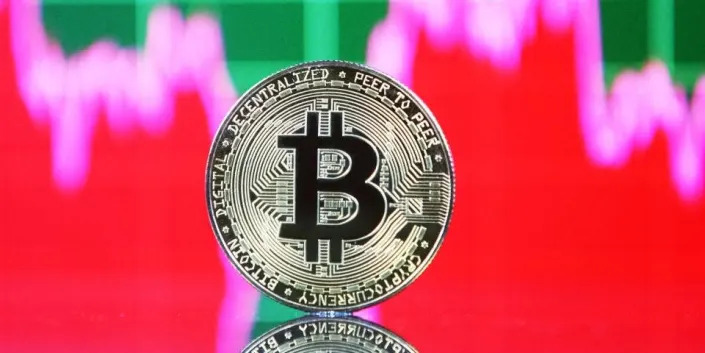Just because it's risky, doesn't make it a scam.
by Emma Newbery | Motley Fool

Key points
Bitcoin is a high-risk investment, but it has many traits that do not chime with being a Ponzi scheme or a scam.
Ever since people first began to invest in Bitcoin (BTC), skeptics have lined up to label it a Ponzi scheme. The thinking is that Bitcoin doesn't actually do anything, so the only way its value can go up is if people buy more of it and push the price up. But does that make it a Ponzi scheme? Let's dive in and find out.
What is a Ponzi scheme?
A Ponzi scheme is an investment scam that uses funds from new investors to pay high rewards to the existing ones. It's named after Charles Ponzi, who conned a number of investors in the 1920s. Unlike a real investment, the fraudster doesn't actually invest money or do anything to generate revenue.
Let's say you were an early entrant into a Ponzi scheme, and put in $500 with a promise of gaining a 20% APY. The scammer would use your $500 to pay the interest on other people's so-called "investments." He or she would then need to convince more people to put in more money, and use that to pay you. But eventually there wouldn't be enough new money coming in, the scam would unravel, and your $500 would have disappeared.
The most famous crypto Ponzi scheme is probably OneCoin -- a supposed cryptocurrency that didn't even have a blockchain behind it. The swindlers tricked investors around the world out of over $4 billion. Ruja Ignatova, the main figure behind OneCoin, disappeared and has never been caught.
The easiest way to answer this question is to look at some of the SEC's definitions of Ponzi scheme red flags and see how Bitcoin adds up.
Bitcoin has generated high returns in the past, but few crypto investors think there's little or no risk involved. For sure, if you'd invested in Bitcoin five years ago, you'd be up over 700% today -- in spite of the recent crash. However, this wasn't in any way guaranteed. This is still a relatively new and unregulated asset class and there is a lot of uncertainty about what will happen next.
We’ve found one company that’s positioned itself perfectly as a long-term picks-and-shovels solution for the broader crypto market — Bitcoin, Dogecoin, and all the others. In fact, you've probably used this company's technology in the past few days, even if you've never had an account or even heard of the company before. That's how prevalent it's become.
Sign up today for Stock Advisor and get access to our exclusive report where you can get the full scoop on this company and its upside as a long-term investment. Learn more and get started today with a special new member discount.Get started
2. Overly consistent returns
If Bitcoin were a Ponzi scheme, investors would be receiving regular payouts from somewhere. In truth, the value of Bitcoin is anything but consistent and its price can swing wildly. It isn't uncommon for Bitcoin to gain or lose 20% in a single day.
There are platforms that pay steady APYs on Bitcoin. Indeed, it would be fair to question whether any of the platforms paying crazy high returns on crypto deposits are Ponzi schemes. But to level this accusation at Bitcoin would be the same as calling the dollar a Ponzi scheme because some scammers use it as a form of payment.
3. Unregistered investments and unlicensed sellers
The SEC says, "Ponzi schemes typically involve investments that are not registered with the SEC or with state regulators." This is an area where crypto does run into more troubled waters. It is relatively unregulated, and only a few cryptocurrencies have registered with the SEC as investments. Most cryptos are regulated by the CFTC (Commodity Futures Trading Commission), as they are treated as commodities rather than investments.
In terms of the sellers, some crypto exchanges are not fully licensed. But there are also a number of top crypto exchanges that work hard to stay on the right side of regulators. Crypto platforms in the U.S. have to have something called a money transmitter license. It isn't the same as being an SEC-authorized investment firm, but it's also not totally unregulated.
Just because it's risky, doesn't make it a scam
Many crypto investors bought for the first time last year. And a number of them -- me included -- are looking at significantly devalued portfolios right now. Some individual cryptocurrencies are down 90% or more from their all-time highs. These prolonged price drops have caused some investors to wonder if the naysayers were right all along. Which is entirely understandable.
Did we all just fall victim to an enormous scam? Unlikely. Not least because if Bitcoin were a scam, there'd be a nefarious person or people behind it actively profiting from the scheme. One of the core premises of Bitcoin is that it is decentralized -- there is no middleman. That isn't to say that crypto hasn't attracted its fair share of sketchy characters. It absolutely has. It's just that the digital currency itself doesn't fit the definition of a Ponzi scheme.
Put simply, there's a huge difference between putting money into a high-risk investment and actively being scammed. For starters, there's a good chance Bitcoin's price will eventually recover, meaning the investment could eventually come good. Plus, there's no Charles Ponzi-style figure tricking people into buying Bitcoin for his or her personal gain.
Bottom line
People who invest in Bitcoin do so because they hope it might prove transformative. Some see it as a form of digital gold, and others believe it could eventually become the currency of the internet. It could also capture a significant chunk of the lucrative remittance market. The challenge is that Bitcoin might not achieve any of these things. It is a highly speculative asset and the industry is in its infancy. There's a chance quantum computing or strict regulation could stifle the digital asset market before it has a chance to fully develop.
Nonetheless, the dramatic price drop and onset of crypto winter does not mean we can call Bitcoin a Ponzi scheme. Whether it can achieve everything Bitcoin believers believe it might is another question entirely.















